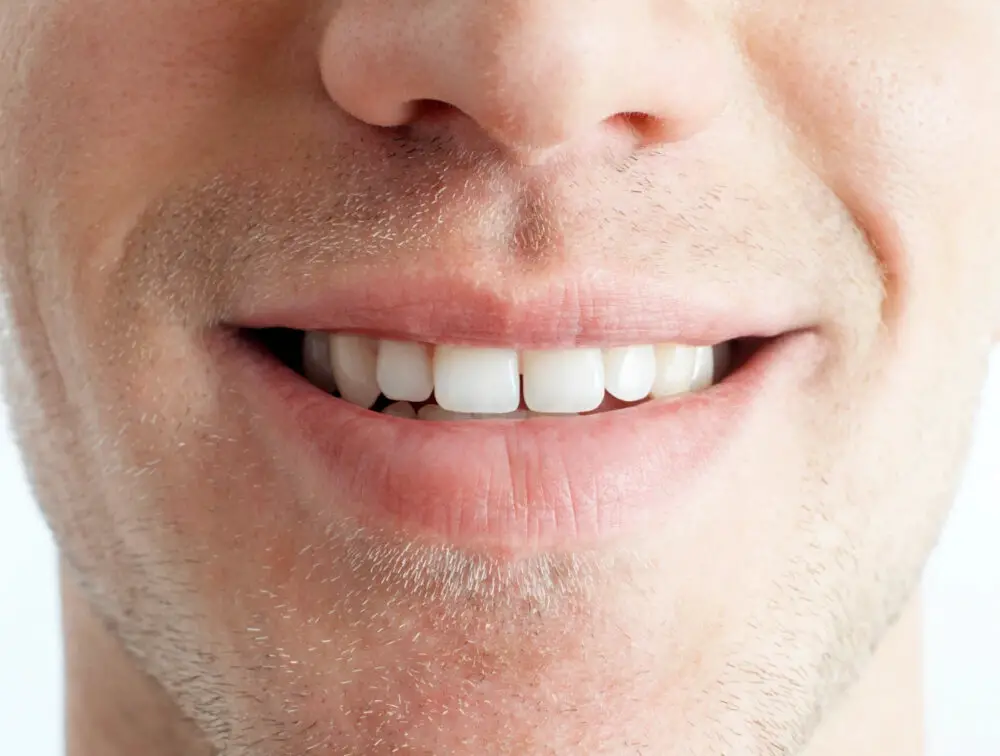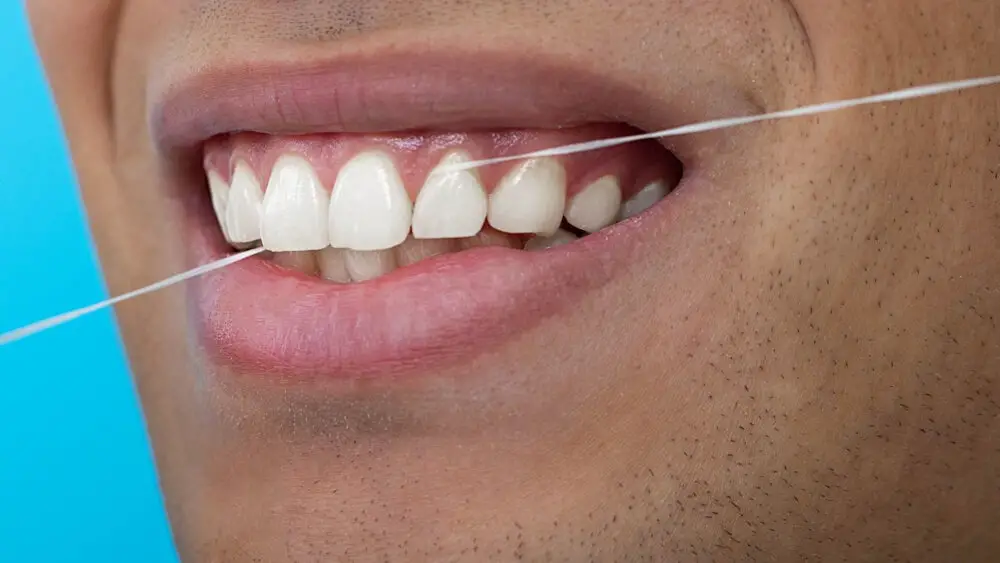Why Do Kids Have Silver Teeth? Understanding the Role of Dental Fillings in Children’s Oral Health

Dental fillings are not uncommon in children, and many young ones have silver teeth due to these fillings. Parents may wonder why their child has silver teeth, and what the purpose of dental fillings is in children’s oral health. The truth is, dental fillings play a crucial role in preventing tooth decay and maintaining healthy teeth in children, and silver fillings are a common choice due to their durability and effectiveness. Tooth decay is a common problem for children, and it can lead to pain, infections, and even tooth loss if left untreated. Dental fillings are a way to address this issue, by removing decayed material from the tooth and filling in the area with a restorative material. Silver fillings, also known as amalgam fillings, have been used for decades and are made of a combination of metals including mercury, silver, tin, and copper. While there has been some controversy around the safety of mercury in dental fillings, the American Dental Association and other health organizations have deemed them safe and effective for use in children’s teeth. Understanding the importance of dental fillings in children’s oral health can help parents make informed decisions about their child’s dental care.
Dental fillings are a common restorative procedure used to repair teeth affected by decay or minor fractures. In children, dental fillings are often needed due to their risk of developing cavities and tooth decay. Children’s teeth are more susceptible to decay because their enamel is thinner and their oral hygiene habits may not be fully developed. Dental fillings can help prevent further damage to the tooth by removing the decayed portion and filling the cavity with a durable material such as silver amalgam or composite resin. Regular dental check-ups and cleanings can help detect and treat cavities early, reducing the need for extensive dental work in the future.
Ensuring good oral health in children is crucial for their overall well-being. Poor oral hygiene can lead to cavities, gum disease, and even tooth loss, which can have a significant impact on a child’s self-esteem and ability to eat and speak properly. It is important to establish good oral care habits early on, including regular brushing, flossing, and dental checkups. Dental fillings can also play a vital role in preserving a child’s oral health, preventing further decay and damage to teeth. While silver fillings may be necessary in some cases, it is important to work with a trusted dentist to explore all available options and find the best solution for each child’s individual needs. By prioritizing good oral health in kids, we can help them maintain healthy teeth and gums for a lifetime.
What are dental fillings?

Dental fillings are a common dental procedure that is performed to repair teeth that have been damaged by decay or trauma. The process involves removing the decayed or damaged portion of the tooth and filling it with a material that restores the tooth’s shape and function. Fillings can be made from a variety of materials including gold, silver amalgam, composite resin, and porcelain. The type of filling used depends on the location of the tooth, the extent of the damage, and the patient’s personal preferences. Silver amalgam fillings, in particular, have been used for decades and are a popular choice for children. These fillings consist of a mixture of metals including silver, copper, and tin, which are combined with liquid mercury to create a durable material that can withstand the forces of chewing and biting. While some studies have raised concerns about the potential health risks of mercury exposure from silver fillings, the American Dental Association and other organizations maintain that the use of these fillings is safe and effective. Ultimately, the decision to use silver amalgam or another type of filling is up to the patient and their dentist. In conclusion, dental fillings are an important tool in maintaining children’s oral health. They can help repair damaged teeth and prevent further decay from occurring. While silver amalgam fillings have been a common choice for many years, patients now have a variety of options to choose from. By working with a trusted dentist, parents can make informed decisions about their child’s dental care and ensure that their teeth remain healthy and strong for years to come.
Dental fillings refer to the materials used by dentists to restore a tooth’s form, function, and aesthetics that have been damaged by decay, trauma, or wear. These fillings could be made of different materials like amalgam, composite resin, porcelain, or gold, each with its unique advantages and disadvantages. The procedure involves removing the decayed or damaged portion of the tooth, cleaning the affected area, and filling the space with the chosen material. Dental fillings are crucial in maintaining good oral health and preventing further damage to the affected tooth, which could lead to more complex and expensive dental procedures in the future.
Dental fillings are used to repair cavities or tooth decay. There are several types of dental fillings available depending on the patient’s preference, budget, and the location of the tooth. The most common type of filling is silver amalgam, which is a mixture of various metals such as silver, tin, and copper. Another type of filling is composite resin, which is a tooth-colored material that blends in with the natural color of the teeth. Ceramic fillings are also an option and are made of porcelain, which is a durable and aesthetically pleasing material. Gold fillings are another option but are less commonly used due to their high cost. The type of filling used will depend on the patient’s needs and preferences, as well as the dentist’s recommendation.
Dental fillings are used to restore teeth that have been damaged by decay or trauma. These fillings are made from a variety of materials, including silver amalgam, composite resin, porcelain, and gold. Silver amalgam is a mixture of mercury, silver, tin, copper, and other metals that has been used for over 150 years. It is durable and relatively inexpensive, but its dark color makes it less aesthetically pleasing than other options. Composite resin is a tooth-colored material that is bonded to the tooth and can be used to restore small to moderate cavities. Porcelain and gold are less commonly used materials that are more expensive but offer improved durability and aesthetics. The choice of filling material depends on factors such as the size and location of the cavity, the patient’s age and oral health, and the patient’s preferences.
Why do kids need dental fillings?

Dental fillings are essential for maintaining the oral health of children. Kids are susceptible to tooth decay, cavities, and dental caries, which can cause severe pain and discomfort. Tooth decay occurs when bacteria in the mouth produce acid that attacks the tooth enamel, leading to the formation of cavities. If left untreated, these cavities can progress to the deeper layers of the tooth, causing pain and infection. Dental fillings are necessary to prevent further decay and restore the damaged tooth’s shape and function. They are made of different materials, including silver, composite resin, and porcelain, depending on the location and extent of the cavity. Silver teeth fillings, also known as amalgam fillings, are commonly used for children’s dental restorations. They are a mixture of metals, including silver, copper, and tin, with a small amount of mercury. They are popular because they are affordable, durable, and long-lasting. They can withstand the pressure of chewing and grinding, making them ideal for restoring teeth in the back of the mouth. Additionally, silver fillings can be placed quickly and easily, making them a convenient option for children who may have difficulty sitting still for long dental procedures. Overall, dental fillings are an essential part of children’s oral health care, preventing further decay, preserving the tooth’s structure and function, and ensuring that kids can enjoy a healthy and pain-free smile.
Tooth decay is a common dental problem in children that can lead to the development of silver teeth or dental fillings. One of the primary causes of tooth decay in kids is poor oral hygiene, which can result in the accumulation of plaque and tartar on the teeth. Another significant factor is a diet high in sugar and carbohydrates, which can create an environment for bacteria to thrive and produce acid that damages the tooth enamel. Furthermore, the lack of fluoride in the water or dental products can also contribute to tooth decay by weakening the enamel’s strength and making it more susceptible to decay. Additionally, some children may have genetic predispositions that make them more prone to tooth decay, while others may have medical conditions or medications that dry out the mouth and increase the risk of decay.
Treating tooth decay in kids is crucial for their overall oral health and development. Untreated cavities can lead to pain, infection, and even tooth loss, which can negatively impact a child’s ability to eat, speak, and learn. In addition, untreated tooth decay can also lead to more serious health problems, such as systemic infections and heart disease. Dental fillings are a common and effective treatment for cavities in children, helping to restore the function and appearance of damaged teeth while preventing further decay. By addressing tooth decay in kids early on, parents can help ensure their child’s health and well-being for years to come.
Dental fillings are a common treatment method for tooth decay in both children and adults. When a tooth is affected by decay, the damaged portion of the tooth is removed and replaced with a filling material such as silver amalgam, composite resin, or porcelain. The filling helps to restore the tooth’s strength and function while also preventing further decay or damage. Dental fillings can be particularly helpful in treating tooth decay in children as their teeth are still developing and more prone to cavities. By addressing decay early with a filling, children can avoid more serious dental issues later on and maintain good oral health well into adulthood.
How are dental fillings placed in children?

Dental fillings are commonly used to treat cavities in children’s teeth. The process of placing dental fillings in children involves several steps. First, the dentist will numb the area around the tooth with a local anesthetic to minimize discomfort during the procedure. Next, the dentist will remove the decayed portion of the tooth using a dental drill. The cavity is then cleaned and shaped so that the filling will fit snugly into the space. Once the cavity is prepared, the filling material is placed into the space and shaped to match the contour of the tooth. The filling material is then cured using a special light, which hardens the material and makes it strong enough to withstand the forces of chewing and biting. The final step is to polish the filling so that it blends in with the surrounding teeth. There are several types of dental fillings that can be used in children, including silver amalgam, resin composite, glass ionomer, and ceramic. Silver amalgam fillings are the most commonly used type of filling in children’s teeth. They are durable, long-lasting, and can withstand the forces of chewing and biting. However, they are also highly visible and can cause some children to feel self-conscious about their smile. Resin composite fillings are a popular alternative to silver amalgam fillings, as they are tooth-colored and blend in with the surrounding teeth. However, they are not as durable as silver amalgam fillings and may need to be replaced more frequently. Glass ionomer fillings are another option for children’s teeth. They are made of a special type of dental cement that releases fluoride, which can help to strengthen the tooth and prevent future decay. Finally, ceramic fillings are a newer type of filling that are highly aesthetic, durable, and long-lasting. However, they are also the most expensive type of filling and may not be covered by insurance.
The process of placing dental fillings in children usually involves several steps. First, the dentist will numb the area around the tooth with a local anesthetic to prevent pain during the procedure. Then, they will remove the decayed part of the tooth with a dental drill or laser. After that, the tooth is cleaned with a special solution to remove any remaining bacteria or debris. The dentist will then place the filling material into the cavity, shaping it to fit the tooth’s contours. Once the filling is in place, the dentist will use a special light to harden the material. Finally, the filling is polished to make it smooth and comfortable for the child. While silver amalgam fillings are the most commonly used material for kids’ teeth, other options like composite resin and glass ionomer are also available.
When it comes to dental procedures in children, the use of anesthesia and sedation can play a crucial role in ensuring their safety and comfort. These techniques are often employed to help alleviate any pain or anxiety that a child may experience during a procedure, allowing the dentist to work more effectively and efficiently. Anesthesia involves the use of medication that induces a temporary loss of sensation or consciousness, while sedation is a milder form of medication that helps to relax the child and keep them calm. Both techniques require careful monitoring by a trained professional to ensure that the child remains safe and comfortable throughout the procedure. While the use of anesthesia and sedation may seem daunting, they can be essential tools in providing high-quality dental care to children.
Dental fillings are a common dental procedure for children, but like any medical procedure, it has its own concerns and risks. The most common concern is the use of amalgam or silver fillings that contain mercury, which has been associated with potential health risks. Moreover, the size and location of the cavity can also affect the longevity of dental fillings, as larger cavities may require more extensive treatment. Additionally, children may experience sensitivity, pain, or discomfort after the procedure. Therefore, it is important to choose a qualified and experienced dentist who can provide safe and effective dental fillings, as well as educate parents and children about proper oral hygiene habits to prevent cavities in the future.
Care and maintenance of dental fillings in children

Proper care and maintenance of dental fillings in children is crucial for their oral health. Children are more prone to cavities and tooth decay due to their sugary diet and poor oral hygiene habits. Dental fillings are a common treatment used to remedy these issues. However, it’s essential to take care of the fillings to ensure they last for a long time. Parents can start by teaching their children good oral hygiene habits such as brushing twice a day, flossing, and using mouthwash. Regular dental checkups are also necessary to detect early signs of decay and prevent further damage. It’s important to remember that fillings are not indestructible and can wear out over time, especially if children frequently consume sugary foods and drinks. Therefore, parents should limit their children’s intake of sugary foods and drinks to reduce the chances of damaging their fillings. Additionally, it’s crucial to maintain good oral hygiene habits after the filling procedure. Children should avoid chewing on hard foods or objects as they may chip or break the filling. If the filling becomes damaged or falls out, it’s essential to contact the dentist immediately to avoid further damage to the tooth. Parents should also monitor any changes in their child’s oral health, such as tooth sensitivity, pain, or inflammation, and notify the dentist. Proper care and maintenance of dental fillings can help prevent further tooth decay and improve overall oral health in children.
Proper oral hygiene is crucial for children with dental fillings as it helps maintain their overall oral health. Good oral hygiene practices such as brushing and flossing regularly, using fluoride toothpaste, and limiting sugary snacks and drinks can prevent the formation of new cavities and protect existing fillings. Neglecting oral hygiene can lead to the accumulation of harmful bacteria in the mouth, which can cause decay and further damage to fillings. Additionally, regular visits to the dentist for cleanings and checkups can help detect and treat any dental problems early on. By prioritizing oral hygiene, parents can help their children maintain healthy teeth and maximize the longevity of their dental fillings.
When it comes to foods and drinks to avoid with dental fillings, it’s important to steer clear of anything too hard, sticky, or sugary. Hard foods such as nuts, ice cubes, and hard candy can potentially crack or dislodge dental fillings, while sticky foods such as caramel and chewing gum can pull them out of place. Sugary foods and drinks, on the other hand, can lead to tooth decay and weaken the filling over time. It’s best to opt for softer foods such as cooked vegetables, fruits, and lean proteins, as well as water and unsweetened drinks to support the longevity of dental fillings in children’s oral health.
Regular dental checkups and follow-up procedures are essential for children with dental fillings. The primary goal is to ensure that the fillings remain intact and functional. During dental checkups, the dentist will examine the filling for signs of wear, cracking, or decay, and recommend any necessary repairs or replacements. Additionally, the dentist will monitor the child’s oral health for any signs of further decay or cavities, which can be prevented through proper oral hygiene and regular dental visits. Parents should encourage their children to maintain good oral hygiene habits, including brushing twice a day, flossing daily, and limiting sugary foods and beverages. By following these healthy habits and keeping up with regular dental checkups, children can maintain healthy teeth and gums for a lifetime.
Dental fillings play a vital role in maintaining children’s oral health by preventing tooth decay and cavities. Children are particularly susceptible to tooth decay due to their love for sugary foods and poor oral hygiene habits. Without dental fillings, cavities can worsen, leading to pain, infection, and even tooth loss. Silver fillings, also known as amalgam fillings, have been a popular choice for many years due to their durability and cost-effectiveness. While some parents may have concerns about the use of silver fillings, they have been proven to be safe and effective. Overall, dental fillings are an essential part of children’s oral health care, and parents should encourage their children to maintain good oral hygiene habits and visit their dentist regularly for check-ups and treatments.
Regular dental checkups and good oral hygiene are crucial for children’s dental health. Children’s teeth are vulnerable to decay, and if left untreated, cavities can lead to more severe dental problems. Regular checkups allow dentists to detect and prevent dental problems before they become serious. Good oral hygiene practices such as brushing and flossing regularly can also help prevent dental problems. Parents should ensure that their children brush twice a day with fluoride toothpaste, floss daily, and limit sugary foods and drinks. These practices can help maintain healthy teeth and gums and prevent the need for dental fillings or other treatments. By instilling good oral hygiene habits in children and scheduling regular dental checkups, parents can help ensure their children have healthy teeth and smiles for years to come.
In conclusion, parents and caregivers play a crucial role in maintaining their children’s oral health. Regular dental checkups and cleanings are essential as it can prevent the need for dental fillings. Additionally, it is important to provide children with a healthy diet that is low in sugar to prevent tooth decay. Parents and caregivers should also encourage good oral hygiene habits, such as brushing and flossing, from a young age. It is also important to address any concerns or questions with a pediatric dentist to ensure the best possible care for children’s dental health. By following these recommendations, parents and caregivers can help their children maintain healthy teeth and avoid the need for silver dental fillings.
Conclusion

In conclusion, dental fillings play a crucial role in maintaining children’s oral health. Although silver teeth or amalgam fillings may have some controversy, they are a safe and effective option for restoring decayed teeth in children. It is important for parents to ensure their children receive regular dental check-ups to detect any potential dental problems early on. Additionally, promoting good oral hygiene habits, such as brushing and flossing, can help prevent the need for dental fillings altogether. Ultimately, prioritizing children’s dental health from a young age can set them up for a lifetime of healthy smiles.






